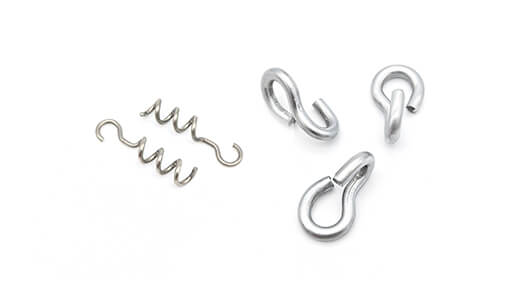Get unique, complex parts easily. No matter your requirements, Chaoyi Spring creates hard-to-produce coil springs and wire forms.
Let us help you create the custom wire form you need, from S-hooks and J-hooks to utility hooks and more.
We work closely with customers across a wide range of industries, helping them design and manufacture made-to-order parts.
Why choose Chaoyi Spring? We prioritize customer-focused collaboration, modern equipment and the latest technology to make your parts per print.
Find the information and guidance you need, from measuring a spring to learning about materials, placing an order and much more.
In the world of mechanical engineering, springs play a crucial role in countless applications. From the simple act of opening a door to the complex workings of a car engine,


In the world of mechanical engineering, springs play a crucial role in countless applications. From the simple act of opening a door to the complex workings of a car engine, springs provide the essential force and movement needed for countless tasks. Two of the most common types of springs are torsion springs and tension springs, and while they share some similarities, they also have distinct characteristics that make them suitable for different purposes. This article aims to provide a comprehensive understanding of the key differences between torsion springs and tension springs, highlighting their unique applications, advantages, and disadvantages.

Torsion springs are designed to store and release energy through twisting or rotating motion. Imagine a spring that you wind up, like the one in a toy car. As you twist the spring, you are storing potential energy. When you release the spring, it unwinds, converting the stored energy into kinetic energy, causing the toy car to move. That's essentially how a torsion spring works.
These springs are usually made of a helical coil that is fixed at one end. When a force is applied to the other end, the coil twists. The amount of force required to twist the spring, known as its spring rate, determines how much force is needed to achieve a specific rotation.
Torsion springs are found in a wide range of applications, some of which include:
Tension springs, unlike torsion springs, store and release energy by being stretched or extended. They work in a similar way to a rubber band. When you pull on a rubber band, you are storing energy. When you let go, the rubber band snaps back, releasing the stored energy.
Tension springs are typically made of a coiled wire that is stretched under load. They are designed to resist the force of elongation and snap back to their original shape when the force is removed. The spring rate of a tension spring indicates how much force is required to stretch the spring a specific distance.
Tension springs are widely used in various applications, such as:
Now that we've explored the basics of both types of springs, let's delve into the key differences that make them suitable for different applications.
| Feature | Torsion Spring | Tension Spring |
|---|---|---|
| Force Type | Twisting or Rotating | Pulling or Stretching |
| Load Application | Applied at one end, causing rotation | Applied at both ends, causing elongation |
| Typical Material | Steel wire, music wire, spring steel | Steel wire, music wire, spring steel |
| Advantages | Compact design, high force output, durable | Simple design, adaptable to various shapes, easy to install |
| Disadvantages | Can be complex to design and manufacture | Can be less durable than torsion springs |
The most significant difference between these springs lies in how they store and release energy. Torsion springs use rotational energy, while tension springs use stretching or pulling force. This fundamental difference leads to their diverse applications.
Choosing the right spring type depends on the specific requirements of your application. Consider these factors:
Both torsion springs and tension springs are vital components in countless applications. They each offer unique advantages and disadvantages, making it crucial to choose the right type based on the specific needs of your project. Understanding the fundamental differences between these springs can help engineers and designers make informed decisions, ensuring optimal performance and reliability in their designs.
In the intricate world of mechanical systems, springs play a vital role in providing essential force and movement. By understanding the key differences between torsion springs and tension springs, we can effectively select the right type for our applications. Whether it's a simple door hinge or a complex industrial machine, the appropriate spring will ensure smooth operation and long-lasting performance. As we continue to innovate and advance in mechanical engineering, springs will undoubtedly remain a cornerstone of our technological endeavors.
Browse some of the custom wire forms and springs that we manufacture. Don’t see what you need? We specialize in made-to-order products that meet your application requirements.
Visit Our GalleryNeed a custom wire form or coil spring? We make it work. Fill out the contact form and a representative will respond within 1 business day. If you have a PDF or CAD file, you can submit to request a quote.